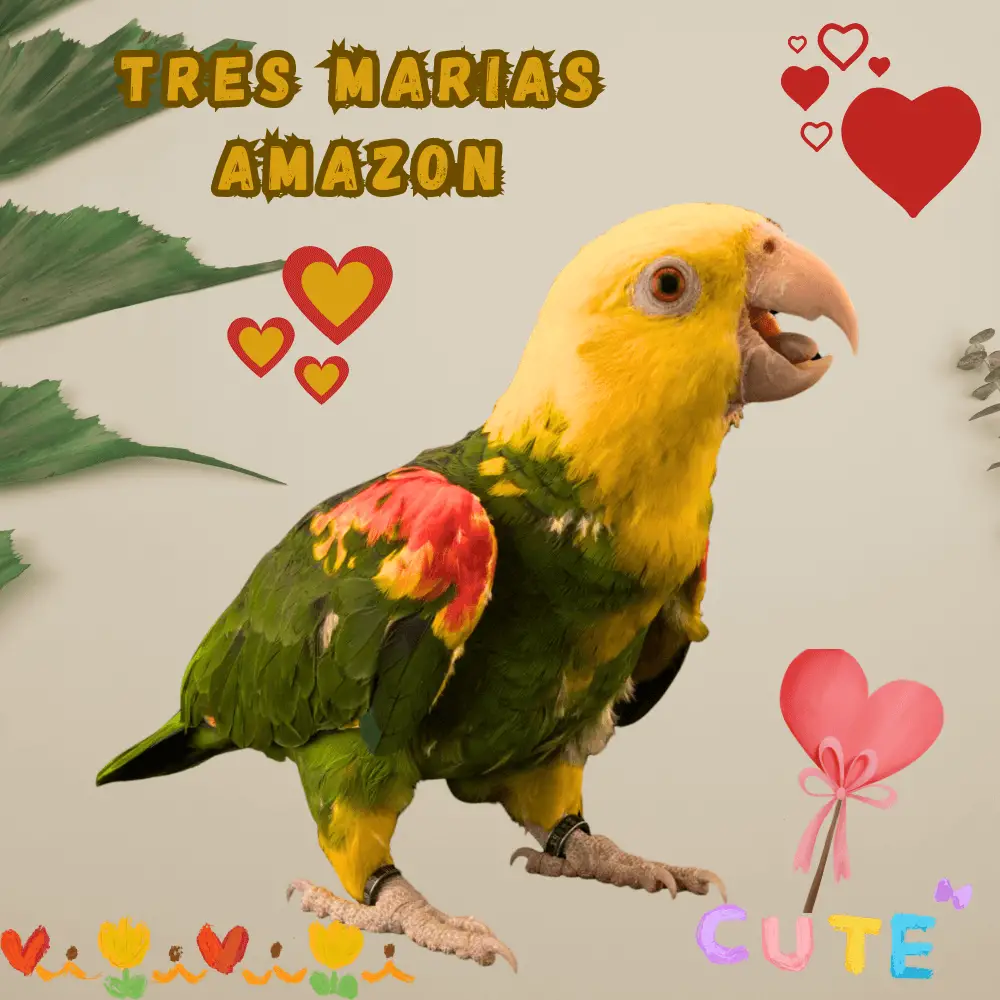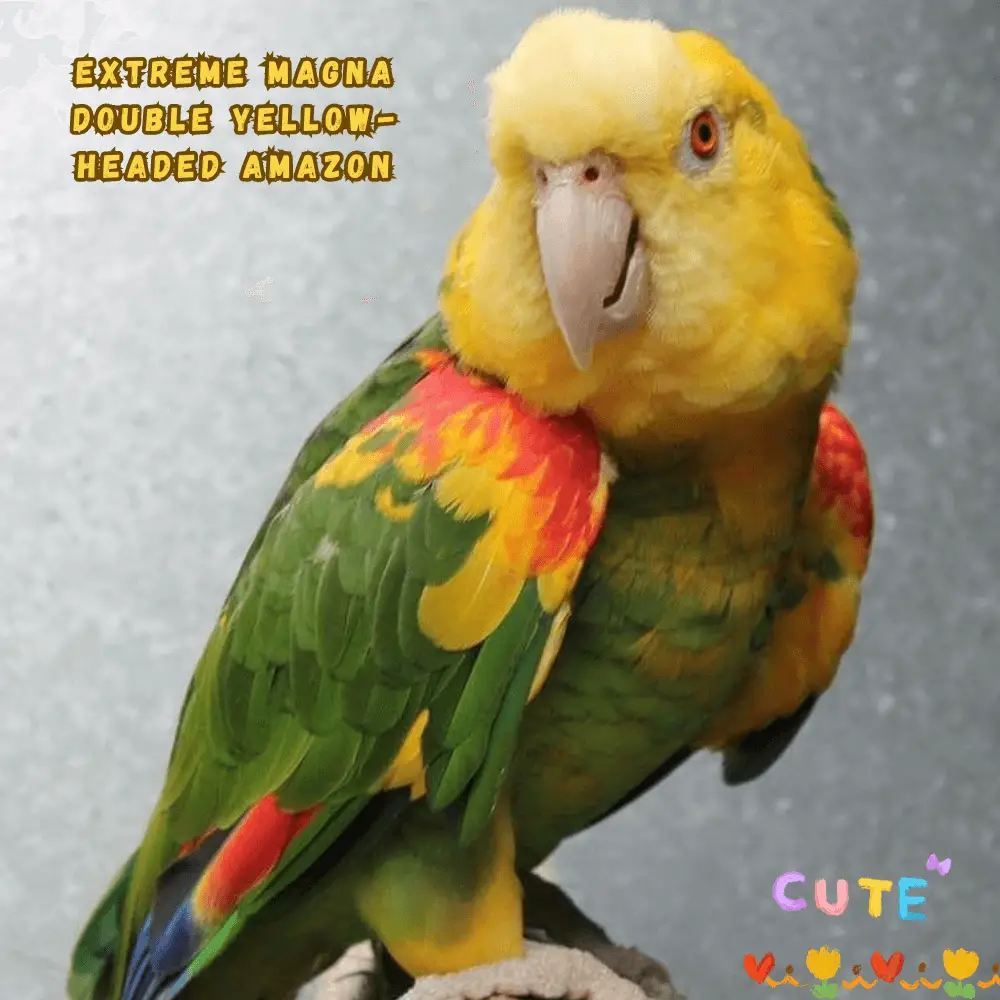Double Yellow-Headed Amazon This type of parrot is called the yellow-headed Amazon parrot or the yellow-headed parrot. These birds are talkative and noisy and tend to break out in singing. The tail feathers explode and slide on the ground while making loud sounds.
Many people confuse it with the yellow-headed parrot, but there is a big difference between them. The difference between The Yellownape Parrot and the Yellow Double The Yellownape Parrot plays a lot and speaks fluently.
These parrots are particularly gifted at learning opera and other types of singing, making them charming companions. They have been known in captivity since the 16th century and kept by people ranging from pirates to noblemen and are documented as having a more solid temperament than the similarly talented yellow Amazon parrot.
Yellow-headed Double Amazons are native to Mexico and northern Central America where they live in mangrove forests and forests near rivers or other bodies of water.
Types of Double Yellow Head Parrots and its forms
SOURCE: African Grey Parrot Pet
Tres Marias amazon

The Tres Marías amazon (Amazona tresmariae) is a subspecies of double yellow-headed Amazon as it was native to three islands off the west coast of Mexico called also the Tres Marias Islands. This subspecies is very rare and is often confused with the Magna Double Yellow-Headed Amazon for a reason.
The amount of yellow on the head is actually quite different. The Oratrix tresmariae parrot is slightly smaller and does not have any restriction on the breast feathers. It has a bluish cast on the breast feathers and a little yellow on the wing scapulars.
- Color: light green.
- Forehead and crown: pale yellow on the head, around the eyes, and down the neck.
- Beak color: pale white.
- Throat color: yellow.
- Chest Color: yellow from the abdomen to the chest.
- The color of the back of the neck: yellow in abundance and more than other species.
- Thigh color: less yellow than the Magna amazon.
- Shoulder color: red.
- Legs and feet color: pale pink with grey.
Oratrix tresmariae amazon

It is a subspecies of Amazona oratrix with more extensive yellow head coloration and separate geographic distribution in eastern and western Mexico i.e. includes distribution from Mexico to Belize and can also be found in Guatemala and lives in gallery forests and tropical forests and the Amazon of Yellow Head (Amazon oratrix) was introduced/introduced For information by Ridgway in 1887 and this type is found in the Gulf countries in abundance.
- Color: Dark emerald green.
- Length: 36-38 cm.
- Weight: about 400 to 500 grams.
- Chest color: pale green.
- Throat color: some yellow dots on the chest and throat.
- Beak color: ivory.
- Forehead and crown: dark narcissistic yellow extending from under the beak with age.
- Head feather color: yellow in the young, extending with age.
- The color of the upper mobile jaw: is ivory with gray in children.
- Mouth and tongue color: ivory and black.
- Shoulder color: a mixture of red and yellow.
- Thighs color: mostly yellow.
- Legs and feet color: grey.
- Habitat: Dry thorn forests, pine savannas, palm savannas, and partially cleared lands in Mexico.
- Diet in the wild: It is said to be fruits, seeds, and flowers.
- Breeding in the wild: The average is 3 eggs and the incubation period is said to be between 25 and 28 days.
- Status in the wild: Threatened by habitat loss.
- Status in captivity: It has been regularly imported to the USA and Europe in the past and breeding success in the US is good with a relatively large number of chicks produced annually.
- Behavior: Absolute singing would be ideal for a pet parrot, but his voice is loud and his nature is aggressive. Younger birds and some females are more mature, like most Amazon parrots, and give a warning when he is in an excited mood.
- Diet: Zupreme pellets as a staple food, table scraps, vegetables, and fruit several times a week, and millet seed available several times a month.
Extreme Magna Double Yellow-Headed Amazon

It is another type of Double Yellow Head parrot known as Extreme Magna. You may have noticed that it is very similar to Double Yellow Head Magna, but it is a unique and very famous species in the Gulf countries as well. It is considered a first-class species of Double Yellow Head Amazon.
It is an active bird that loves to climb around its area and will love to fly if it has enough space. Among the necessary toys for this bird are those that can be chewed and cut, as toys made of softwood and paper that are easily destroyed are necessary, as well as strong toys made of leather, hardwood, and acrylic.
- Color: light green.
- Chest Color: yellow extends from the abdomen to the chest.
- Forehead and crown: pale yellow on the head, around the eyes, and down the neck.
- Throat color: yellow.
- Head feather color: more yellow than all previous species.
- Beak color: ivory.
- Mouth and tongue color: dark red.
- The color of the back of the neck: the yellow color increases more abundantly than the previous species, and the older it gets, the more yellow it becomes.
- Shoulder color: red.
- Thighs color: yellow.
- Legs and feet color: pale pink with gray nails and white nails.
Ochrocephala Magana amazon

This species of Amazon parrot is revered for its ability to talk and its exquisite beauty. The Magna Double Yellow-Headed Amazon is a subspecies of the regular Double Yellow-Headed Amazon but is slightly larger and has more yellow on the head than in Younger age and is abundant in the Atlantic slopes of Mexico and south of Tamaulipas.
Double Yellow Head Magna enjoys wood chewing and should be provided with pieces of pine or fir wood to chew on. They also like green branches with leaves and benefit from the nutrients obtained from chewing on the leaves and bark.
Good types of branches to offer to include willow, honeysuckle, eucalyptus, palm, and brushwood. Bottle, acacia, and fruitwood. They also have strong, energetic, and very collective personalities. They love people, and many of them become talented speakers and singers.
Double Yellow Head Magna Parrots require a diet rich in natural beta-carotene. Root vegetables such as carrots, beets, and potatoes are important additions to the diet. They also eat seeds and sprouted grains.
- Color: light green.
- Breast color: yellowish-green feathers.
- Forehead and crown color: light yellow.
- Throat color: yellow extending to the chest.
- Beak color: ivory.
- The color of the movable jaw: the color is ivory.
- Shoulder color: a mixture of red and yellow.
- Thighs color: yellow.
- Legs and feet color: light gray to white to the nails.
Related article:

